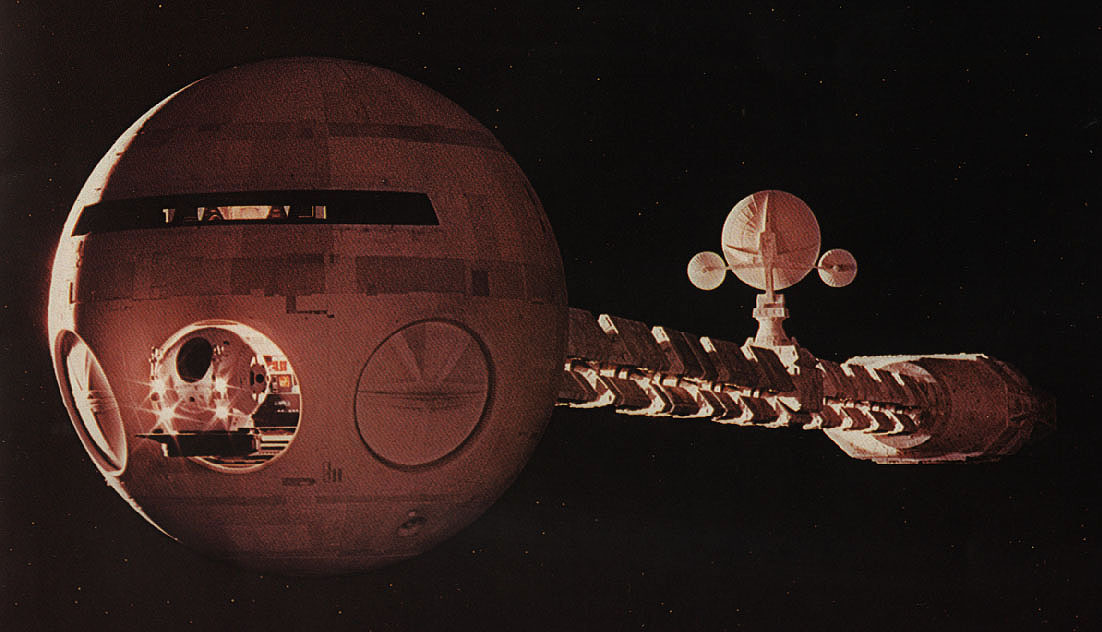
One conceptual design for the Jupiter Icy Moons Orbiter would place a large array of heat-shedding radiator panels between the spacecraft's power source and ion-propulsion thrusters. CREDIT: NASA

By ROGER SNODGRASS, roger@lamonitor.com, Monitor Assistant Editor
Employing nuclear power systems to explore distant features of our solar system is now off the drawing boards and into testing.
"Nuclear power has long been recognized as an enabling technology for exploring and expanding into space and fission reactors offer essentially limitless power and propulsion capabilities," said David Poston, a 16-year veteran of nuclear technologies in space.
Poston, who leads the space fission power team at Los Alamos National Laboratory addressed a conference in Albuquerque last week on various technical options for meeting the power and propulsion requirements for JIMO, the planned mission to three large jovian moons.
The voyage is still a long way off, but Poston is immediately concerned with the dilemma of balancing the entire flight system against the power it will need.
"The missions vary between 10 and 15 years," he said. "The key thing is power use over the lifetime. Every minute spent fissioning causes more damage to the materials."
LANL is one of the principal partners with NASA's Marshall Space Flight Center, working with counterparts at the space agency's Jet Propulsion Laboratory and Sandia National Laboratories.
Their job over the next few years is to design and build quickly a series of prototype models that can test hardware and system issues, but without using the actual nuclear power upon which the spacecraft will rely.
"We use electrical heaters where the fuel would be," said Poston, who was called in to help conduct a preliminary engineering and design study for JIMO last summer.
Since heat energy is converted to electrical energy by the nuclear fuel in the fission system.
Mission planners tend to scale up their wish list for power demands, eager to take advantage of the scientific and investigative opportunities at hand.
But for every added bell and whistle, for every added demand on data storage and transmission, a proportionately high demand for power will also determine the ultimate configuration of the spacecraft.
"So we must thoroughly understand these technical risks before developing the first system," said Poston.
"For example, there are fewer technical and development challenges for a 500 kilowatt-thermal reactor than a 1,000-kilowatt-thermal reactor."
After circling Jupiter, JIMO will take the local route, spending months at a time, years altogether, circling Callisto, Ganymede, and Europa, in that order. Ganymede is the largest, Callisto, the second largest and Europa is the fourth largest moon in the solar system. The Hubble telescope has found evidence that Ganymede has a thin layer of oxygen.
These intriguing satellites, the size of small planets, appear to contain vast seas of ice.
The presence of water, seemingly enriched by organic compounds, and a planet heated by the tidal and magnetic forces of the giant planet of Jupiter, poses the tantalizing possibility that the icy moons may also harbor living organisms. The plan for JIMO is to orbit them in turn, study them in depth with sophisticated instruments, and scout for life and geological characteristics.
Since each will be subjected to the same kinds of analysis, comparisons and contrasts between them will add to the depth of perspective of the mission.
The idea of using nuclear power in space erupted into controversy in the years leading up to the launch of the Cassini spacecraft in 1997. Cassini used a radioisotope thermoelectric generator, powered by less pounds of plutonium dioxide.
But JIMO will require many kilowatts of electrical power to operate its payload of scientific instruments and as many as a 100 kilowattts of electricity for its ion propulsion drive, according to NASA.
One of its added safety factors is that its fission reactors won't go critical until after a conventional chemically powered launch, meaning that it will be no more radioactive than its fuel until that time.
JIMO's tank will probably contain a relatively small amount of uranium oxide as its nuclear fuel.
When its atoms beginning splitting, it would supply safe, long-lasting, and reliable power
"We have to get a power system on test within the next two years, to prove this thing is going to work," said Poston.
A LANL press release noted that the team has already built successively more powerful components for the nuclear reactor to be used, including a 30-kilowatt reactor core, and a single module suitable for a 500-kilowatt reactor core.
JIMO would be the first of NASA's programs under Project Prometheus, that would use nuclear powered spacecraft to seek answers to how the solar system was created, what its fate will be and whether life exists beyond the earth.
A multi-billion-dollar project, Poston said the engine modules that he is building for testing cost about $500,000 each, and the final power system will cost several million.
http://www.lamonitor.com/articles/2004/02/18/headline_news/news04.txt

